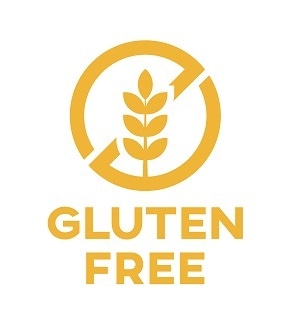Children at risk of celiac disease are more likely to develop the condition if they consume higher-than-average amounts of gluten during the first five years of life, according to a new study recently published in JAMA.
The multinational prospective study of thousands of genetically predisposed children found that a higher gluten intake was associated with a significant increase in celiac disease autoimmunity (the first sign of a negative response to the protein) and in full-blown celiac disease.
 ChameleonsEye | Shutterstock
ChameleonsEye | Shutterstock
What is celiac disease?
Celiac disease is a genetic autoimmune disorder of the digestive system where the protein gluten triggers inflammation in the small intestine and affects the body’s ability to absorb nutrients from food. This can cause more than 200 symptoms, but the more common ones include abdominal pain and bloating, diarrhea and vomiting, constipation, pale stool, fatigue and weight loss.
Gluten, which is derived from wheat, barley, and rye, is found in pasta, breakfast cereals, most types of bread, and biscuits, pastries and cakes.
‘But wheat flour is often used as a thickening, bulking or coating agent in sauces, puddings, meat and fish products and ready meals and so gluten is widely consumed in a large variety of foods eaten by both children and adults,” says Professor Kevin Whelan, head of department of nutritional sciences at King’s College London.
According to the Celiac Disease Foundation, around one in 100 people worldwide are estimated to have the disease and around 200 million may not be aware that they have it. The only way to manage the condition is to follow a strict gluten-free diet, where only foods and drinks with a gluten content of less than 20 parts per million are consumed.
Multinational study concentrates on at-risk children
For the current study, Carin Andrén Aronsson from the Unit for Diabetes & Celiac Disease at Lund University in Sweden evaluated 6,605 infants across the United States, Finland, Germany and Sweden who were born between 2004 to 2010. All of the youngsters were at high-risk for celiac disease as they carried a genotype associated with the disease.
Celiac disease is a unique model in autoimmune research since scientists know the precise genes involved in its pathogenesis and that gluten is the environmental trigger. However, although this information is important for understanding the disease, it does not explain the substantially increased prevalence over recent decades in the US and Europe.
“Thus, there is substantial interest in the environmental trigger, gluten, particularly related to the timing of its introduction and amount ingested as the driving factors associated with this increased prevalence,” write Maureen Leonard and Alessio Fasano (Harvard Medical School, Boston, Massachusetts) in an associated JAMA editorial.
Above-average gluten intake increased risk of celiac disease
Using food records, Aronsson and colleagues recorded the youngsters’ gluten intake at six, nine and 12 months of age and then biannually through to their fifth birthdays and compared the data to reference amounts of gluten intake in healthy children at each age.
They found that a higher gluten intake was associated with a 6.1% increased risk for celiac disease autoimmunity and a 7.2% increased risk for celiac disease for each additional gram above the average gluten intake per day. Generally, the incidence peaked among children who were aged between 2 and 3 years.
“Increased intake of gluten during the first 5 years of life was an independent risk factor for celiac disease autoimmunity and celiac disease in genetically predisposed children,” writes the team
The authors acknowledge that there was some uncertainty about the accuracy of the reported gluten intake; they suggest a randomized clinical trial is conducted to assess the effects of different intakes during early childhood in genetically at-risk children.
Whelan has called the study “impressive,” but adds that the results cannot be used to create guidelines for how all children are fed because the large majority can eat gluten without increasing their risk for celiac disease.
This study is only observational, so before we start giving dietary advice we need a large clinical trial to tell us whether removing gluten from the diet reduces the risk of developing coeliac disease, how strictly gluten needs to be removed from the diet and for how long. Certainly, any special dietary restrictions in babies and toddlers needs to be done following consultation with a doctor and a dietitian for expert advice.”
Professor Kevin Whelan, King’s College, London
Debunking the myths surrounding celiac disease
Many myths surround the topic of celiac disease, gluten sensitivity and the gluten free diet. Below, some of the most common myths are debunked.
If food packaging says “Manufactured in a facility that also processes wheat,” it is not safe for people with celiac disease.
The above is an example of what the FDA refers to as a voluntary allergen advisory statement, which is not the same as the “contains wheat” statement that is required by law if a food definitely includes wheat.
The voluntary warning means that the product is not made with those allergens, but that there may be a risk of contamination during manufacture.
Although a product that is labeled gluten-free may bear such a warning, it must still comply with the gluten-free labeling law.
“Gluten-free” means the food contains no gluten

Producing foods that contain zero gluten is almost impossible and would severely limit food supply. Current gluten detection methods test to 3 parts per million (ppm) at the lowest. Even if it were possible to test for zero ppm in the future, many manufacturers simply could not meet this restriction.
Importantly, researchers generally agree that people with celiac disease can safely tolerate up to 20 ppm of gluten.
Gluten sensitivity can be tested using a blood, saliva or stool test.
Tests such as these that are available on the market have not yet been validated and accepted by the scientific community. No biomarkers for gluten sensitivity have yet been identified, meaning it can only be diagnosed through a process of elimination under the supervision of a physician or registered dietitian.
Journal references:
- Andrén Aronsson C, et al. (2019). Association of Gluten Intake During the First 5 Years of Life With Incidence of Celiac Disease Autoimmunity and Celiac Disease Among Children at Increased Risk. JAMA. doi:10.1001/jama.2019.10329.
- Leonard M. M. & Fasano A. (2019). Gluten and Celiac Disease Risk: Is It Just a Matter of Quantity? JAMA. doi:10.1001/jama.2019.9678.